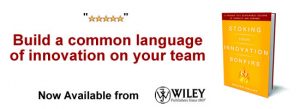What Pundits Predicting the Future Always Seem to Get Wrong

Peter Thiel likes to point out that we wanted flying cars, but got 140 characters instead. He’s only partly right. For decades futuristic visions showed everyday families zipping around in flying cars and it’s true that even today we’re still stuck on the ground. Yet that’s not because we’re unable to build one. In fact the first was invented in 1934.
The problem is not so much with engineering, but economics, safety and convenience. We could build a flying car if we wanted to, but to make one that can compete with regular cars is another matter entirely. Besides, in many ways, 140 characters are better than a flying car. Cars only let us travel around town, the Internet helps us span the globe.
That has created far more value than a flying car ever could. We often fail to predict the future accurately because we don’t account for our capacity to surprise ourselves, to see new possibilities and take new directions. We interact with each other, collaborate and change our priorities. The future that we predict is never as exciting as the one we eventually create.
1. The Future Will Not Look Like The Past
We tend to predict the future by extrapolating from the present. So if we invent a car and then an airplane, it only seems natural that we can combine the two. If family has a car, then having one that flies can seem like a logical next step. We don’t look at a car and dream up, say, a computer. So in 1934, we dreamed of flying cars, but not computers.
It’s not just optimists that fall prey to this fundamental error, but pessimists too. In Homo Deus, author and historian Yuval Noah Harari points to several studies that show that human jobs are being replaced by machines. He then paints a dystopian picture. “Humans might become militarily and economically useless,†he writes. Yeesh!
Yet the picture is not as dark as it may seem. Consider the retail apocalypse. Over the past few years, we’ve seen an unprecedented number of retail store closings. Those jobs are gone and they’re not coming back. You can imagine thousands of retail employees sitting at home, wondering how to pay their bills, just as Harari predicts.
Yet economist Michael Mandel argues that the data tell a very different story. First, he shows that the jobs gained from e-commerce far outstrip those lost from traditional retail. Second, he points out that the total e-commerce sector, including lower-wage fulfillment centers, has an average wage of $21.13 per hour, which is 27 percent higher than the $16.65 that the average worker in traditional retail earns.
So not only are more people working, they are taking home more money too. Not only is the retail apocalypse not a tragedy, it’s somewhat of a blessing.
2. The Next Big Thing Always Starts Out Looking Like Nothing At All
Every technology eventually hits theoretical limits. Buy a computer today and you’ll find that the technical specifications are much like they were five years ago. When a new generation of iPhones comes out these days, reviewers tout the camera rather than the processor speed. The truth is that Moore’s law is effectively over.
That seems tragic, because our ability to exponentially increase the number of transistors that we can squeeze onto a silicon wafer has driven technological advancement over the past few decades. Every 18 months or so, a new generation of chips has come out and opened up new possibilities that entrepreneurs have turned into exciting new businesses.
What will we do now?
Yet there’s no real need to worry. There is no 11th commandment that says, “Thou shalt compute with ones and zeros†and the end of Moore’s law will give way to newer, more powerful technologies, like quantum and neuromorphic computing. These are still in their nascent stage and may not have an impact for at least five to ten years, but will likely power the future for decades to come.
The truth is that the next big thing always starts out looking like nothing at all. Einstein never thought that his work would have a practical impact during his lifetime. When Alexander Fleming first discovered penicillin, nobody noticed. In much the same way, the future is not digital. So what? It will be even better!
3. It’s Ecosystems, Not Inventions, That Drive The Future
When the first automobiles came to market, they were called “horseless carriages†because that’s what everyone knew and was familiar with. So it seemed logical that people would use them much like they used horses, to take the occasional trip into town and to work in the fields. Yet it didn’t turn out that way, because driving a car is nothing like riding a horse.
So first people started taking “Sunday drives†to relax and see family and friends, something that would be too tiring to do regularly on a horse. Gas stations and paved roads changed how products were distributed and factories moved from cities in the north, close to customers, to small towns in the south, where land and labor were cheaper.
As the ability to travel increased, people started moving out of cities and into suburbs. When consumers could easily load a week’s worth of groceries into their cars, corner stores gave way to supermarkets and, eventually, shopping malls. The automobile changed a lot more than simply how we got from place to place. It changed our way of life in ways that were impossible to predict.
Look at other significant technologies, such as electricity and computers, and you find a similar story. It’s ecosystems, rather than inventions, that drive the future.
4. We Can Only Validate Patterns Going Forward
G. H. Hardy once wrote that, “a mathematician, like a painter or poet, is a maker of patterns. If his patterns are more permanent than theirs, it is because they are made with ideas.” Futurists often work the same way, identifying patterns in the past and present, then extrapolating them into the future. Yet there is a substantive difference between patterns that we consider to be preordained and those that are to be discovered.
Think about Steve Jobs and Appl for a minute and you will probably recognize the pattern and assume I misspelled the name of his iconic company by forgetting to include the “e†at the end. But I could have just have easily been about to describe an “Applet†he designed for the iPhone or some connection between Jobs and Appleton WI, a small town outside Green Bay.
The point is that we can only validate patterns going forward, never backward. That, in essence, is what Steve Blank means when he says that business plans rarely survive first contact with customers and why his ideas about lean startups are changing the world. We need to be careful about the patterns we think we see. Some are meaningful. Others are not.
The problem with patterns is that future is something we create, not some preordained plan that we are beholden to. The things we create often become inflection points and change our course. That may frustrate the futurists, but it’s what makes life exciting for the rest of us.
Image credit: Pixabay
Wait! Before you go…
Choose how you want the latest innovation content delivered to you:
- Daily — RSS Feed — Email — Twitter — Facebook — Linkedin Today
- Weekly — Email Newsletter — Free Magazine — Linkedin Group
 Greg Satell is a popular author, keynote speaker, and trusted adviser whose new book, Cascades: How to Create a Movement that Drives Transformational Change, will be published by McGraw-Hill in April, 2019. His previous effort, Mapping Innovation, was selected as one of the best business books of 2017. You can learn more about Greg on his website, GregSatell.com and follow him on Twitter @DigitalTonto.
Greg Satell is a popular author, keynote speaker, and trusted adviser whose new book, Cascades: How to Create a Movement that Drives Transformational Change, will be published by McGraw-Hill in April, 2019. His previous effort, Mapping Innovation, was selected as one of the best business books of 2017. You can learn more about Greg on his website, GregSatell.com and follow him on Twitter @DigitalTonto.
NEVER MISS ANOTHER NEWSLETTER!
LATEST BLOGS
Devil in the Details – Strategic Innovation
There is more talk about strategic innovation every day. As more and more industries enter their commodity phase, companies are…
Read MoreWhy Municipal WiFi is a Bad Idea
I saw a headline today in USA Today about Municipal WiFi and how many cities are pulling the plug on…
Read More



